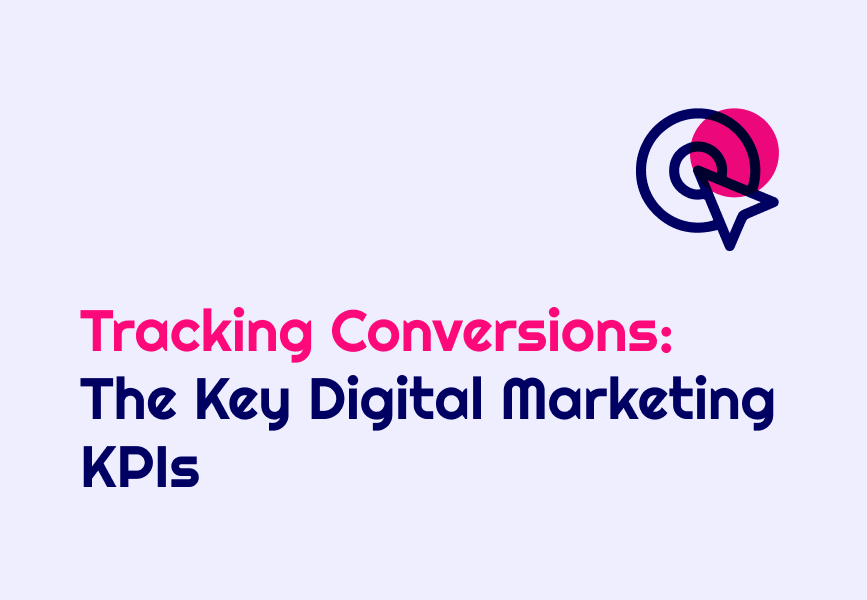Tracking Conversions: The Key Digital Marketing KPIs
Explore the top 4 essential digital marketing KPIs that are crucial for tracking conversions and...

Explore the top 4 essential digital marketing KPIs that are crucial for tracking conversions and optimizing your marketing strategies.
Understanding Digital Marketing KPIs
Understanding Digital Marketing KPIs is vital for measuring the success of your marketing efforts. KPIs, or Key Performance Indicators, provide valuable insights into the effectiveness of your marketing campaigns and help you make data-driven decisions. By understanding the different KPIs and their significance, you can identify areas for improvement and optimize your marketing strategies.
Digital Marketing KPIs can vary depending on your specific goals and objectives. Some common KPIs include website traffic, conversion rates, click-through rates, engagement metrics, and return on investment (ROI). Each KPI provides valuable information about different aspects of your marketing performance, allowing you to measure success and make informed decisions.
In order to understand Digital Marketing KPIs effectively, it is important to establish clear goals and objectives for your marketing campaigns. By aligning your KPIs with your overall business objectives, you can track the right metrics and assess the impact of your marketing efforts accurately. This will enable you to make data-driven decisions and optimize your marketing strategies for better results.
Key Digital Marketing KPIs for Conversions
When it comes to tracking conversions, there are several key digital marketing KPIs that you should pay attention to. These KPIs provide insights into the effectiveness of your marketing campaigns in driving conversions and help you identify areas for improvement.
One important KPI for conversions is the conversion rate. This measures the percentage of website visitors who complete a desired action, such as making a purchase or filling out a form. A high conversion rate indicates that your marketing efforts are resonating with your target audience and driving them to take action.
Another important KPI is the cost per acquisition (CPA), which measures the average cost of acquiring a new customer or lead. By tracking the CPA, you can assess the efficiency of your marketing campaigns and optimize your budget allocation for maximum returns.
Additionally, the average order value (AOV) is a crucial KPI for conversions. This metric measures the average value of each transaction or purchase made by a customer. By increasing the AOV, you can improve your profitability and maximize the value of each customer.
Finally, the customer lifetime value (CLV) is an essential KPI that helps you understand the long-term value of your customers. By calculating the CLV, you can assess the profitability of different customer segments and tailor your marketing strategies to maximize customer lifetime value.
By tracking these key digital marketing KPIs for conversions, you can gain valuable insights into the effectiveness of your marketing campaigns and make data-driven decisions to optimize your strategies.
Analyzing Conversion Rates
Analyzing conversion rates is crucial for understanding the effectiveness of your marketing campaigns in driving desired actions. By closely monitoring conversion rates, you can identify areas for improvement and optimize your marketing strategies to increase conversions.
One approach to analyzing conversion rates is to segment your data. By breaking down your conversion rates by different customer segments, demographics, or marketing channels, you can gain valuable insights into which segments or channels are performing well and which ones need improvement. This allows you to allocate your resources and efforts more effectively.
Another approach is to analyze conversion rates over time. By tracking conversion rates over different time periods, such as weeks, months, or seasons, you can identify trends and patterns in your marketing performance. This can help you optimize your campaigns based on seasonal fluctuations or identify opportunities for improvement.
Additionally, A/B testing can be a powerful tool for analyzing conversion rates. By testing different variations of your marketing campaigns, such as different headlines, images, or calls to action, you can determine which elements resonate best with your audience and drive higher conversion rates. This iterative approach allows you to continuously improve your marketing efforts.
By analyzing conversion rates and leveraging different strategies, you can optimize your marketing campaigns for better performance and drive higher conversions.
Optimizing Campaigns with KPI Insights
KPI insights play a crucial role in optimizing your marketing campaigns for better performance and results. By leveraging the insights provided by key digital marketing KPIs, you can make data-driven decisions and optimize your campaigns to achieve your desired objectives.
One way to optimize your campaigns is by identifying underperforming areas. By analyzing KPIs such as click-through rates, bounce rates, or conversion rates, you can identify areas where your campaigns are not performing well and make the necessary adjustments. This can include optimizing your landing pages, refining your targeting, or improving your messaging.
Another way to optimize your campaigns is by identifying high-performing areas and scaling them. By analyzing KPIs such as conversion rates, customer acquisition costs, or return on ad spend, you can identify campaigns or channels that are delivering excellent results and allocate more resources to them. This can help you maximize your returns and drive even more conversions.
Regularly monitoring and analyzing KPIs is essential for ongoing campaign optimization. By continuously tracking your KPIs and making data-driven decisions, you can iterate and improve your campaigns over time, ensuring that you are always optimizing for better performance and results.
By leveraging KPI insights, you can optimize your marketing campaigns and drive better results.
Measuring Success and ROI
Measuring success and return on investment (ROI) is crucial for evaluating the effectiveness of your marketing efforts and making informed decisions. By tracking the right digital marketing KPIs, you can measure success and assess the ROI of your campaigns.
One important KPI for measuring success is the return on ad spend (ROAS). This metric measures the revenue generated for every dollar spent on advertising. A higher ROAS indicates that your advertising campaigns are delivering positive returns and driving profitability.
Another important KPI is the customer acquisition cost (CAC), which measures the cost of acquiring a new customer. By comparing the CAC with the customer lifetime value (CLV), you can determine the profitability of your customer acquisition efforts and make informed decisions about resource allocation.
Additionally, engagement metrics such as click-through rates, time on site, or social media interactions can provide insights into the effectiveness of your marketing campaigns in capturing and retaining audience attention. By tracking these metrics, you can measure the engagement levels of your campaigns and make adjustments to optimize for better results.
Measuring success and ROI is an ongoing process that requires regular monitoring and analysis of digital marketing KPIs. By leveraging these insights, you can make data-driven decisions, optimize your marketing strategies, and achieve your desired objectives.
Your ultimate guide to strategic outsourcing
Subscribe for expert tips, trends, and tailored solutions.




